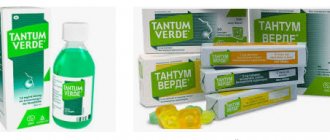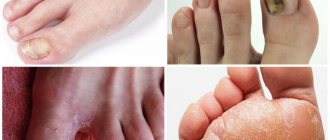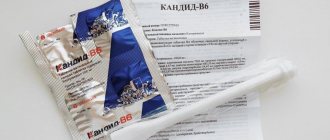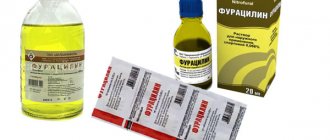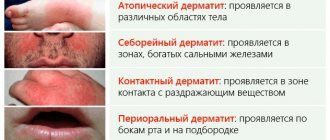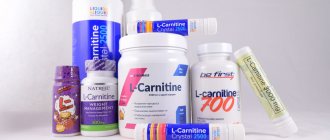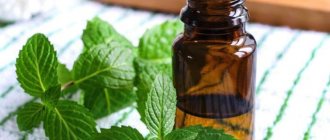One of the reasons for the formation of cheesy plaque and ulcers in the oral cavity is a fungal infection. For treatment in such cases, drugs with an antimycotic effect for internal and external use are prescribed. The antifungal agent Candide, used to localize the problem on the oral mucosa, will be discussed in this article.
Candide solution for fungal infections in the oral cavity - principle of action and instructions for use
The appearance of a dense whitish or grayish coating on the surface of the tongue, gums and cheeks usually indicates the development of a candidal infection - thrush. Often the pathological process is accompanied by the appearance of small ulcers. After examination and confirmation of the diagnosis, the dentist prescribes appropriate antimycotic drugs. One such remedy is Candide oral solution. This is an antifungal drug, and you will learn how to use it correctly from this article.
Indications for use
An antifungal solution is prescribed for use in patients with damage to the oral mucosa and pharynx due to excessive proliferation of yeast-like fungi of the genus Candida and other types of fungi, including molds and dermatophytes. Thus, “Candide” is usually prescribed for the development of oral thrush and candidal stomatitis against the background of reduced immunity.
The drug is used in the treatment of thrush
Instructions for use for infants (newborns)
Before using Candida for a newborn, be sure to consult your doctor.
Candida is prescribed to infants when a cheesy coating appears on the oral mucosa. This lesion is caused by the development of a fungus and therefore requires treatment. Otherwise, the lesion grows further, affecting the digestive organs and the genital area.
With candidal stomatitis (thrush), there is a loss of appetite, the baby becomes whiny and restless. The problem can be eliminated by local treatment with an antifungal agent based on clotrimazole.
For mild stomatitis, the child’s mucous membrane is treated with Candide solution in the following order:
- moisten a cotton pad in a weak solution of potassium permanganate and wipe the oral mucosa with it;
- Apply 3 drops of the drug to a clean cotton pad or cotton swab and use targeted movements to treat the affected areas with fungus (alternatively, wrap a bandage around your finger and apply the working solution to it).
According to the instructions, the number of procedures per day is no more than 2 times. After 2-3 days, improvements will be visually noticeable, the affected areas will decrease. It will take a week to treat a mild form of stomatitis, and more complex cases require an integrated approach with additional treatment with an alkaline solution (soda up to 5 times a day) and other antifungal agents. You cannot increase the dose of Candida or the number of daily procedures. Treatment for extensive thrush lasts up to 10-14 days.
Release forms
The main form of release of “Candida” is a solution in which the concentration of the active substance is 1%. The product is sold in a 15 ml polyethylene bottle. The kit includes a dropper plug, which greatly simplifies the process of treating affected areas of the mucosa. The slightly viscous substance is colorless and odorless, but after using it, patients note a slight bitter taste in the mouth. The drug is also available in other form factors: ointment, spray, suspension, gel, powder and lotion. However, not all of the listed forms are intended for treating the oral mucosa.
In dentistry, the drug is used in the form of a solution.
Candide and its main properties
The antifungal agent Candide is a broad-spectrum drug. This medicine belongs to the group of imidazole derivatives. Release form of the drug: solution; gel; vaginal tablets .
Most often, patients use the product in the form of a solution. The basis of the medicine is, mainly, the active substance on the synthesis of argosterol . It is one of the parts of the cell membranes of the fungus. Thanks to this substance, an excellent therapeutic effect is achieved.
Candida for the oral cavity actively works against diseases of the mucous membrane against many diseases caused by molds, dermatophytes and other types of yeast-like fungi
When applied by irrigation of the oral cavity, the product penetrates deeply into the soft tissues . It reaches maximum therapeutic concentrations. In this case, a minimal part of the active substance is absorbed into the human blood.
Indications for use
Usually the medicine Candide is prescribed to patients with affected oral mucosa. Despite the fact that the medication has a wide spectrum of action, it is mainly prescribed for stomatitis .
Thanks to its properties, it quickly copes with fungal pathogens of the genus Candida after use. In a short time, the medicine suppresses the development of fungal colonies. It is even effective against a compromised immune system . Due to this advantage, it is prescribed to patients with diabetes, severe forms of oncology, and even HIV-infected people.
Sanitation of the oral cavity with Candida is also performed for prophylactic purposes . It cannot be used more than three times a day.
Contraindications and side effects
Since this drug is not absorbed by the mucous membrane when applied topically, it is often prescribed to children with stomatitis. It can be safely used for infants. If there is an individual intolerance to the component composition of the medicine, then it should not be used.
Doctors recommend using it with caution for stomatitis in infancy. The substance clotrimazole is a very active component, so doctors advise following the recommended dose of the drug.
, an allergic reaction may occur . It can manifest itself in the form of burning and tingling in the area of application of redness of the mucous membrane. If such symptoms appear, then you need to stop taking Candide.
pharmachologic effect
The main active ingredient in the drug "Candide" is clotrimazole. It is a derivative of imidazole, a broad-spectrum active component in the treatment of fungal infections. The therapeutic effect in this case is due to the ability of clotrimazole to interfere with the synthesis of ergosterol, which is present in the membrane of fungal cells. As a result, the structure of the cell itself is deformed, and it is deprived of the ability to function normally, which leads to the destruction of microorganisms1.
Instructions and dosages
As for how to use the drug, you need to carefully check the instructions. The solution should be applied to problem areas using a cotton ball or two. "Candide" is used to treat exclusively affected tissues - it does not need to be applied to the entire mucous membrane.
For infants with candidal stomatitis
Answering the question about at what age can Candide be used, it should be noted that the drug in the form of a solution is approved for use from a very early age, that is, for newborns. But before you start treating your baby’s oral cavity, you should definitely consult a doctor. The procedure is performed as follows:
- a cotton ball should be moistened in a weak solution of potassium permanganate and carefully wipe the mucous membrane with it,
- Apply 3 drops of solution to a new clean ball or cotton swab and spot treat the affected areas.
Frequency of treatment for infants - no more than 2 times a day.
The instructions for the drug indicate the maximum frequency of treatment for infants - no more than 2 times a day. The first results will become noticeable after 2-3 days of therapy. Treatment usually takes about a week, but if stomatitis is severe, complete recovery will take 10-14 days. Moreover, therapy should be comprehensive, with the use of other antifungal agents prescribed by a specialist.
For children from 3 years old
For children aged 3 to 18 years, the dosage and frequency of use of the solution is determined by the attending physician. First, you will have to undergo appropriate diagnostics so that a specialist can determine the type of pathogen and assess the extent of the damage. The standard single dosage for children is 2-3 drops. It is usually recommended to carry out such treatment 3 times a day after meals.
Pregnancy and lactation
While there is no confirmed clinical data on the safety of using the solution during pregnancy and lactation, this product cannot be used without a doctor’s prescription. And even if necessary, a specialist may suggest the use of Candida with increased caution only in the 2nd trimester, if the benefit outweighs the potential risk.
During pregnancy you should use the drug with caution
Adults and elderly people
The dosage for adult patients is usually 10-20 drops. It is recommended to carry out the procedure 3-4 times a day. As practice shows, a noticeable effect occurs on days 3-5 of therapy. If relief does not occur during this time, you need to visit the doctor again and, as prescribed, begin more intensive complex treatment. For elderly patients, the dosage should be adjusted by a specialist taking into account the current state of health.
“And I had candidiasis in my mouth. When they put the denture on my upper teeth, about a couple of months later I started getting thrush. Terribly unpleasant sensation, I didn’t even expect it... I can’t say that something hurts, but everything itches, there’s always this plaque, smell, and burning ulcers in my mouth. Then the doctor prescribed Candide solution to me, a normal remedy, it helped me. But it’s better not to use it so easily; it’s still worth talking to the doctor.”
Valentina V.D., from correspondence on the woman.ru forum
The dosage for adult patients is usually 10-20 drops.
The instructions indicate that it is best to treat problem areas at the same time, preferably after eating. You should first rinse your mouth thoroughly and remove any remaining food. It is also important to complete the course of therapy completely. Even if acute symptoms have passed in the first days, premature cessation of treatment can lead to relapse. In the future, it will be more difficult to combat the spread of the fungus, since microorganisms become resistant to clotrimazole. And one more important point: after treating the mucous membrane, you should refrain from eating for at least half an hour.
Instructions for use
Liquid Candide should be used strictly in the doses prescribed by the doctor or indicated in the instructions. You should not skip treatments, nor should you combine two treatments at once, doubling the amount of product.
Dosage for adults and children
To treat a child’s mouth, 2-3 drops of the product are most often prescribed, which are applied with a cotton swab to the affected areas.
The Candida solution is applied using a piece of cotton wool (a cotton swab) to the affected areas of the soft tissues of the oral cavity (not to the entire mucous membrane!). One treatment involves the use of 10-20 drops of the product.
The procedure for adults should be repeated 3-4 times a day; the therapeutic effect is noticeable on the 3-5th day after the start of use. If no improvements are noted during this period, the doctor makes an additional prescription, providing for an integrated approach to eliminating the problem.
It is advisable to carry out dental treatment of focal areas on the mucous membrane at the same time (after eating). If a positive result is noticeable in the first days after treatment, there is no need to stop the procedure; residual fungal cells may re-enter the active phase of development. Repeated exposure to clotrimazole will be less effective, as microorganisms become resistant to it. This complicates further treatment.
For children over 3 years old, the dosage and regimen of use of the Candide solution is prescribed by the doctor, based on the type of pathogen and the extent of the affected area. More often, the one-time dose for a child is 2-3 drops applied to a cotton swab, which transports the product to the hearth. Healthy areas of the oral mucosa should be bypassed. It is recommended to carry out treatment no more than 3 times a day (after meals).
Important! You should not eat food for an hour after the procedure using Candide solution.
Duration of treatment
With early diagnosis of a fungal infection, treatment with Candida quickly produces a positive effect, but in any case, the solution is used for two weeks. The antifungal agent is used systemically; if you stop treating the affected areas of the oral mucosa before the specified period, the fungus becomes resistant to the active component of the drug , which reduces its pharmacological effects upon repeated use.
Stomatitis in a weak form of development does not require long-term treatment, so more often the doctor prescribes Candida in solution for use throughout the week.
How long does therapy last?
According to reviews of experts in the field of dentistry, with early diagnosis of a fungal infection, the use of the solution gives a rapid therapeutic effect, which can most often be noticed already on the 3-4th day from the start of use. However, for adult patients, the duration of therapy is usually at least 2 weeks.
As mentioned above, this antifungal agent is intended for systemic use. This means that premature cessation of its use in the future will seriously complicate the treatment process. In this case, mild stomatitis can be cured in a week, but only a doctor can determine the exact timing of treatment.
Contraindications for use
Candide is not recommended for use in case of hypersensitivity to the components of the drug. In addition, the use of the medicine in the first trimester of pregnancy is prohibited. In the second and third cases, drug treatment is prescribed at the discretion of the doctor if the benefit of the drug for the mother is greater than the potential risk to the fetus.
According to the instructions, Candide is also contraindicated for nursing women. If there is a need for treatment with the drug, breastfeeding should be stopped.
Long-term treatment with this antifungal agent on large areas of skin is contraindicated. Candide is prescribed with caution to patients with liver failure. In this case, constant monitoring of the functional state of the liver is necessary.
Candide is available in the form of: creams (vaginal and for external use), solution and ointment (for external use), vaginal tablets.
There are contraindications for specific forms of the drug. For example, Candida ointment is not recommended for use on its own for: irregular or abnormal vaginal bleeding, vaginal or vulval ulcers, vaginal discharge of blood clots or pus with an unpleasant odor.
Candida ointment and solution are also contraindicated for use in case of damage to the skin, the formation of wounds or blisters.
What are the contraindications
There are no categorical contraindications to the use of the solution, but before starting a therapeutic course, you should definitely consult a doctor and study the composition in order to exclude the possibility of developing allergic reactions to the components. You should also avoid using Candida during pregnancy and breastfeeding. The advisability of using the drug during these periods remains at the discretion of the treating specialist.
Before using the drug, you should definitely consult with your doctor.
Contraindications
There are no significant restrictions on the use of Candide, however, before use you should familiarize yourself with the composition to exclude an allergic reaction to the components it contains. The drug is also contraindicated:
- during pregnancy in the first trimester (active substances may have a negative effect on fetal development);
- during breastfeeding.
When consulting with a doctor, you need to inform him about your existing allergies, their causative agents, and pregnancy. The limited period of gestation in the first trimester may be accompanied by a complete refusal to take Candida. The specialist, having studied the tests and information about the course of pregnancy, weighs all the risks and threats from the use of clotrimazole.
Side effects
In extremely rare cases, the drug provokes the appearance of adverse reactions, mainly associated with the body’s increased sensitivity to the active substances included in its composition. In this case, the mucous membrane may noticeably redden at the site of application of the drops; in other situations, urticaria appears, and a slight tingling and burning sensation occurs within the treated area.
If such symptoms appear, you should rinse your mouth and consult a doctor. A specialist can suggest alternative medications to combat fungal infections. It should also be noted that a slight bitter taste in the mouth causes gagging in some patients. If a significant amount of the product enters the stomach, diarrhea and abdominal cramps may develop.
Thrush and its signs
Thrush most often appears against the background of an acute respiratory viral infection or acute respiratory infection, as well as after normal regurgitation, intestinal dysbiosis, etc. The proliferation of fungus in the mouth of bacteria of the genus Candida is facilitated by the acidic environment that appears in the baby.
Obvious signs of thrush appear in the form of a thick white coating on the child’s tongue and gums. They indicate thrush in the baby’s mouth. Thrush is quite common in newborns, but can occasionally occur in adults.
At the very beginning of its manifestation, thrush does not cause any inconvenience to the baby. Gradually, foci of infection begin to spread, which gives the baby a lot of discomfort. He begins to be capricious, sleep and eat poorly .
If the disease progresses further, then problems with the respiratory system and gastrointestinal tract may arise. To solve the problem of thrush, it is necessary to detect it in time and not delay treatment.
Modern medicine offers many means of combating thrush. An excellent remedy for treating thrush is the drug Candide. Before starting treatment, it is very important that the pediatrician makes a diagnosis and only after that can you start using Candida.
For what reasons does candidiasis occur?
Within normal limits, every adult and child has fungus in the oral mucosa, as well as in the digestive organs. When the fungus begins to actively multiply, danger arises. The reasons for the proliferation of the fungus are as follows:
- reduced immunity;
- intestinal dysbiosis;
- vaginal candidiasis at the time of birth in the mother;
- low PH level in the oral cavity;
- asthma;
- antibiotic treatment;
- diet with excess carbohydrates and sugar;
- chronic diseases;
- lack of B vitamins and folic acid;
- antibiotic treatment.
Candidiasis can also occur due to violation of sanitary and hygienic standards. Very often, the infection is transmitted to children during childbirth from the mother.
Drug interactions
Advanced forms of fungal infections require complex treatment. However, interactions with certain medications may affect the effectiveness of Candida. For example, in combination with Nystatin and Amphotericin, the activity of clotrimazole is noticeably reduced.
Interactions with certain medications may affect the effectiveness of the drug
Analogs of Candide
There are other means with a similar effect. So, for example, among analogues of “Candida”, experts in the field of dentistry identify the following drugs with an identical active ingredient in their composition:
- "Canesten" - presented in the form of a spray, the cost of a 30 ml bottle is approximately 350 rubles,
- “Clotrimazole” is a 1% solution with the same active ingredient in its composition, the cost of a 15 ml bottle is approximately 180 rubles,
- “Kanizon” is a cream with a 1% concentration of clotrimazole in its composition, a 20 g tube costs about 75-80 rubles,
- “Candibene” - a cream with a concentration of 1% costs around 130 rubles for a 30 g tube.
Together with Candide, the same pharmacological group also includes such products as Miconazole cream and Mycoseptin ointment. Micogal cream and Binafin oral tablets have pronounced antifungal properties. All of the above drugs are allowed for use only as prescribed by a doctor.
How much does the drug cost?
The cost of Candide depends on the form of its release and the pricing policy of the retailer. The price for a bottle of solution for treating the oral mucosa (15 ml) is approximately 350-400 rubles in Moscow pharmacies.
Candide solution is an effective remedy, which often becomes the best option in terms of price and quality ratio. The drug is non-toxic and does not cause dangerous reactions even if the recommended dosage is exceeded. At the same time, it demonstrates high efficiency in the fight against fungal infections of oral tissues, which is confirmed by numerous positive reviews from doctors and their patients.
1According to data at the office. manufacturer's website: glenmark-pharma.ru.
Features of good stagnation
The drug is not intended for internal use, so there is no need to swallow it when frozen.
Avoid getting the drug into your eyes.
In some cases, bacterial resistance to clotrimazole is avoided. If there is no therapeutic effect of the drug, another method of treatment should be used.
Suspension during pregnancy or breastfeeding.
Administration of the drug during pregnancy is possible only if, in the opinion of the doctor, the extracted bark for the mother outweighs the potential risk for the fetus.
Data on the possibility of penetration of clotrimazole into breast milk every day. Therefore, the drug can be used during breastfeeding only if, in the doctor’s opinion, the extracted bark for the mother outweighs the potential risk for the child.
This is due to the fluidity of the reaction during treatment with vehicles or other mechanisms.
Doesn't flow in.
